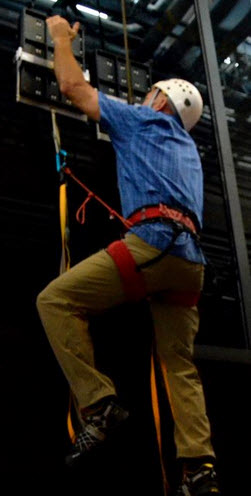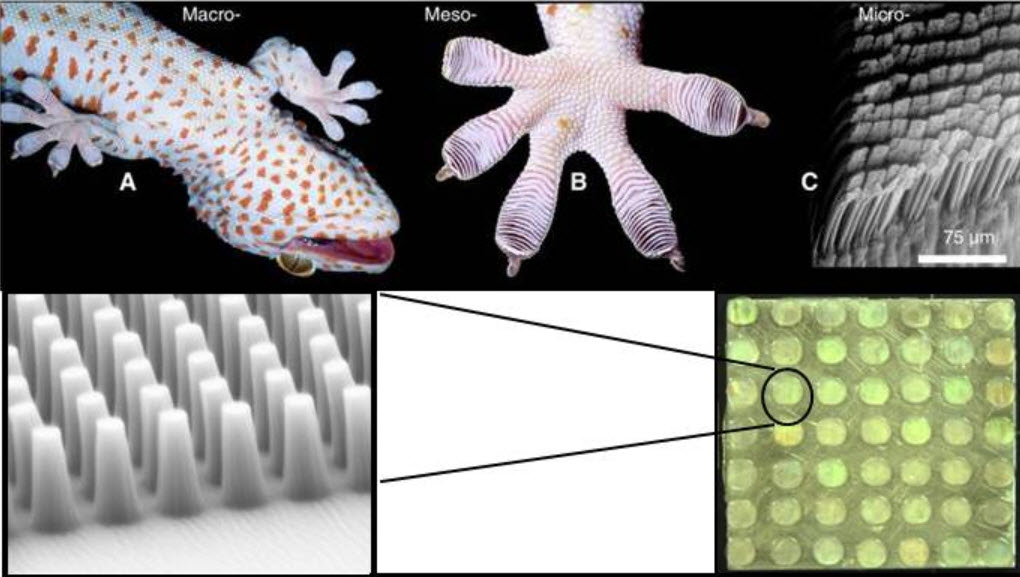First human climbing of glass wall, using gecko-inspired paddles
June 13, 2014

During testing, an operator climbed 25 feet vertically on a glass surface using no climbing equipment other than a pair of hand-held, gecko-inspired paddles and a backup safety belt. (Credit: : DARPA)
The first known human climbing of a glass wall using gecko-inspired climbing devices has been demonstrated by DARPA’s Z-Man program.
A 218-pound climber ascended and descended 25 feet of glass with no climbing equipment other than a pair of hand-held, gecko-inspired paddles (he also carried an additional 50-pound load in one trial).
A gecko is able to climb on glass by using van der Waals intermolecular forces between the spatulae (nanoscale hairs), resulting in easy attachment and removal of the gecko’s toes from the surface.
To enable gecko-like dynamic climbing at human scale, engineers at Draper Laboratory of Cambridge, Mass. created climbing paddles capable of balancing adhesive forces in both the shear (parallel to the vertical surface) and normal (perpendicular to the vertical surface) directions.
That feature is necessary for a climber to remain adhered to a surface without falling off while in the act of attaching and detaching the paddles with each movement.
The goal of the program is to develop biologically inspired climbing aids to enable warfighters carrying a full combat load to scale vertical walls constructed from typical building materials, according to DARPA. The research also promises to lead to reversible adhesives for potential biomedical, industrial, and consumer applications.

The anatomy of a gecko toe (B) consists of a microscopic hierarchical structure composed of stalk-like setae (C) 100 microns in length, 2 microns in radius. From individual setae, a bundle of hundreds of terminal tips called spatulae (lower left), approximately 200 nanometers in diameter at their widest, branch out and contact the climbing surface. (Credit: DARPA)